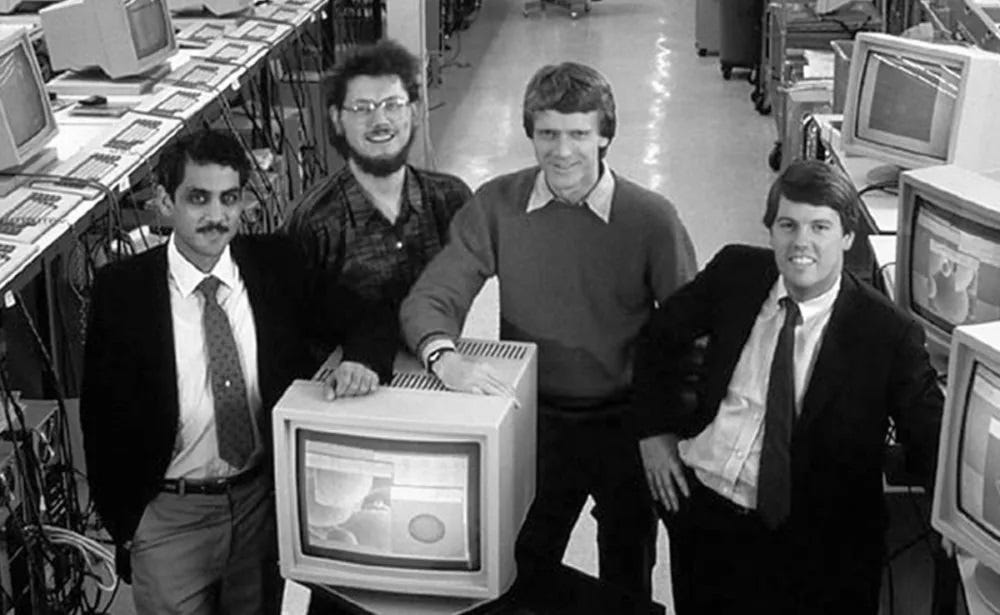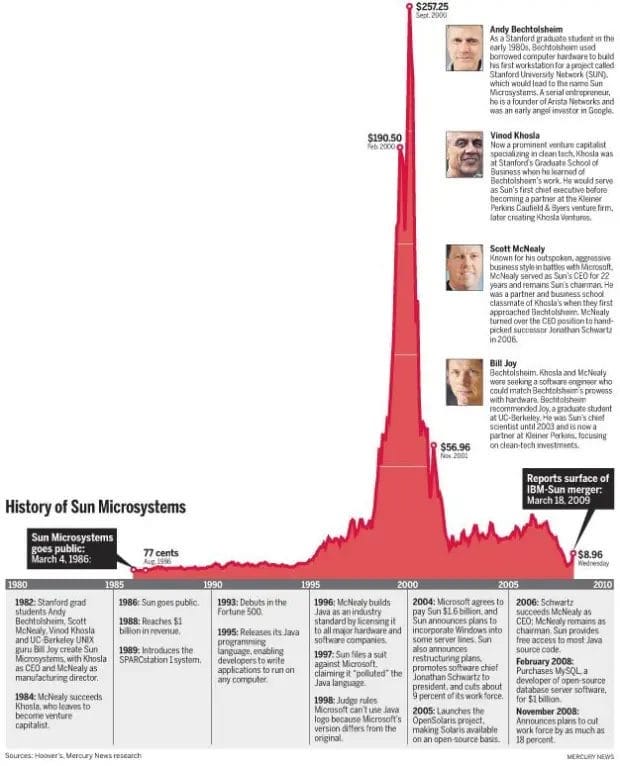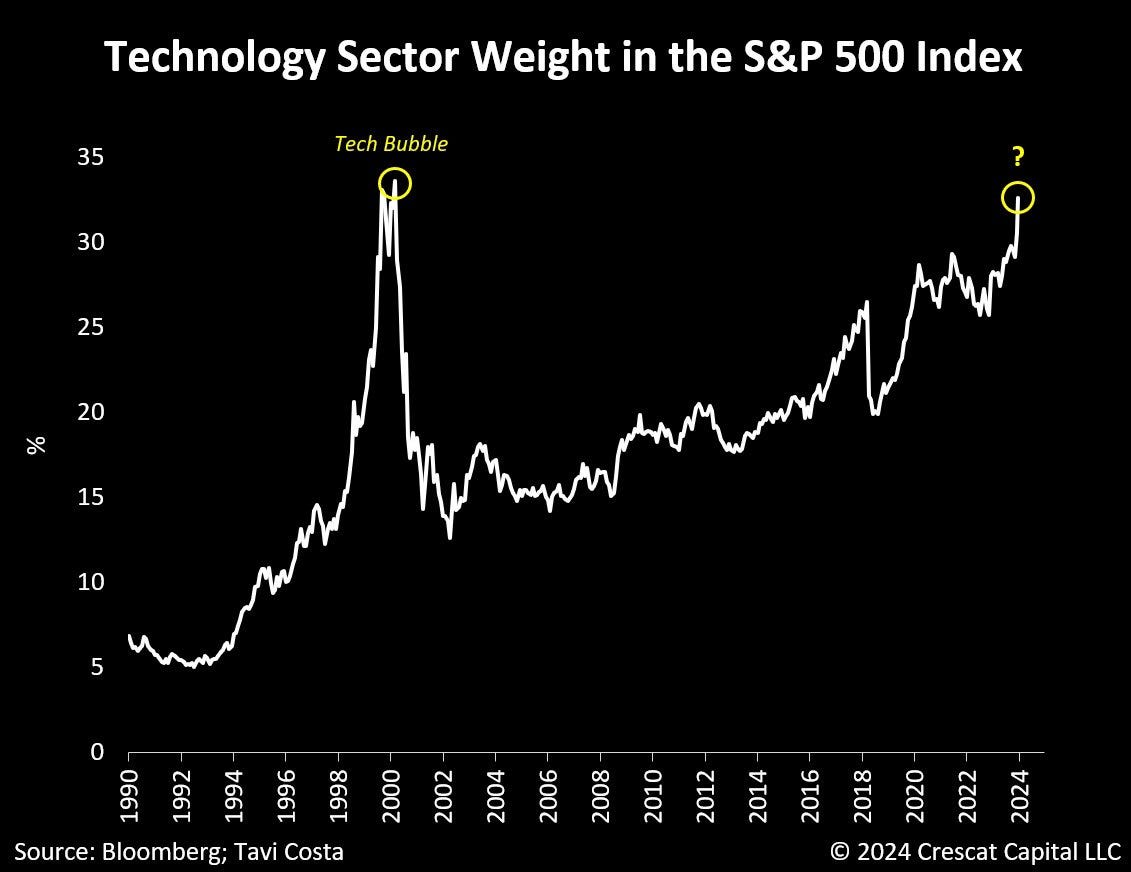Scott McNealy was the Jensen Huang of the 1990’s dot com era. He was the poster boy for a world that was being redefined by the internet and you could not get through a technology magazine, business news or the nascent era of internet news feed without his interview or something about him and Sun Microsystems. If Nvidia today is the beating heart of the Gen AI revolution, in the hey days of 1990’s internet boom, Sun Micro was the backbone of the internet infrastructure and tools that were used to build web applications.
Having started with the technology industry in 1995, I have lived through this era and SUN is close to my heart. It had some of the smartest engineers and cutting-edge products, be it the servers that were the foundation for the web applications or their revolutionary Java tools that were redefining software development. I did get nostalgic when I saw a tweet from Scott couple of years ago on the 40th anniversary of founding SUN.
Sun Microsystems (SUN stood for Stanford University Network), a company that came out of the hallowed halls of Stanford, shaped Silicon Valley in ways that only a few companies have. As Scott said, four 27-year-olds, Scott McNealy, Andy Bechtolsheim, Vinod Khosla and Bill Joy started Sun Microsystems on February 24, 1982. They dreamt of redefining what computing meant. They made machines that were not only powerful but in an era of room sized machines, they gave the world box sized workstations. Their wizardry with hardware turned out systems that could handle some serious number-crunching. They were way ahead of their time in betting on network computing and one of their famous tag lines was, “Network is the Computer”. They came up with the Java programming language that sped the adoption of the Internet and gave the world a crop of innovative engineers and founders. They became the dream, and their products were what the entire start-up ecosystem in the valley used, to build their internet dreams. Along the way, universities and businesses got hooked giving them the ability and power to do more at their desk.
But the story of SUN is also a story of caution. They did really put the dot in dotcom. Unsatiable demand for their products, the stock market mania and the narrative of “This time is different”, drove the market cap of Sun Microsystems to $200 billion in 2000, but then the stock fell by 80% in the ensuing dotcom bust.
Now's the right time to remember what Scott McNealy told Bloomberg just after the dotcom collapse.
In the aftermath of dotcom crash, eventually competition caught up and Sun failed to pivot to the lucrative software space. It was at the peak of their success that SUN made some serious mistakes. One of their biggest failures was their inability to pivot to digital media. They were too focussed on traditional computing products, servers and workstations and this limited Sun’s ability to compete with Microsoft and the rise of Google, which were developing digital platforms. Blindsided they were also by the rise of Linux and the open-source movement, which severely dented their traditional server market, as organizations adopted it to reduce costs. They were great with their SPARC chips, but it was proprietary architecture. In a world moving to more open architectures and the rise of x86 processors, SUN found the going tough with their refusal to embrace the trend. It came back to bite them hard. After struggling to get its mojo back through the 2000’s, it was acquired by Oracle for $7.4 billion in 2009.
Story of Sun Microsystems is also the story of the Internet bubble, which inflated through mid to late 1990s, peaked in early 2000. It was unique in a way that, unlike many bubbles of centuries past, it saw participation from retail investors by the millions. It was not confined to a small geographic region but spread around the world. It involved an important technological advancement whose promises were in many ways fulfilled later but whose early attempts were often misguided. It gave us some of the most innovative companies of today, but in the process, trillions of dollars of wealth were destroyed, and millions of people lost money.
A sense of Déjà vu – Will it be a dotcom redux?
Many people including me are asking – is the current Artificial Intelligence boom similar to the dotcom era and will it end in the same way? You can’t blame us, especially the ones who have lived through dotcom frenzy and are currently experiencing the AI one. There are many similarities, especially with the exuberance seen in the past few months with Nvidia stock price. Ed Harrison of Bloomberg in an incisive article last week had this to say: As Nvidia’s stock price scales new heights, the metrics look unsustainable, especially in comparison with the rest of the market. As the frenzy over artificial intelligence gathers pace, now is not the time to chase go-go stocks higher. Even so, not everything screams “bubble”.
· Signs of mania are forming that are worrisome
· The mania begins and ends with Nvidia
· Investors have a lot of idle cash to put to work
· A gold-rush mentality creates boom-bust risks, irrespective of AI’s promise
· If the real economy doesn’t tip into recession, it’ll be OK
“Nvidia now has the largest market value in the world at $3.4 trillion, recently surpassing Microsoft and Apple. The stock trades at 80 times trailing earnings and 50 times forward earnings. And those are the numbers to justify the current valuation. To make actual gains on an investment in Nvidia, one would have to see those figures grow or see the stock continue to beat estimates, shrinking those figures to something like Microsoft’s almost 40 times earnings multiple on both a forward and trailing basis. But the fact that the largest-cap company also has a gargantuan multiple is, prima facie evidence of a mania. As with all good things, though, enthusiasm risks turning into mania. And for Nvidia, we’re already there. Did you know that in 2023 Microsoft had $212 billion in revenue to Nvidia’s $61 billion? Apple had $383 billion in revenue that year. And yet Nvidia is now more valuable than either? The reality is, Nvidia depends on companies like Microsoft as customers. If Microsoft’s fortunes turned down along with Google’s or Meta’s, Nvidia’s would too, as they would cut back on AI investment.”
Can’t help but read what Scott McNealy told Bloomberg in 2002, again and again!
Crescat capital also shared a very interesting chart to put things in perspective. "The tech sector made up 34% of the S&P 500 at the peak of the Tech Bubble in 2000. Today, it represents 33%."
Right now, people seem to be divided in their opinion. For many it looks like a bubble, but others dismiss AI as a completely different era. While there are similarities, there are also significant differences between 1999 and 2024. This was nicely highlighted by Dave Vellante in Silicon Angle:
Yes, similar to the dotcom boom, the AI mania is being driven by similar factors:
· Gen AI is the Netscape moment of today.
· Both dotcom and the current AI are being driven by a Capex boom.
· Investor exuberance and FOMO.
· Narratives around disruption and radical change.
But in 2024, the Mag 7 which are driving the market have established presence, revenue, profitability and clear visible earnings growth. In 1999 it was the reverse – companies like Webvan, globe, pets and other dotcom start-ups were burning cash at exorbitant rates with only “eyeball metrics” to show and had no revenue or visibility on profitability. Recently Bank of America highlighted this in a report.
So, are we in a bubble? Only time will tell. The market can stay insane loner than the people betting against it can stay liquid and I for one would not short this market now. But it helps to remember that history might not repeat but it rhymes. For centuries, starting with the Tulip and South Sea Bubbles, similar factors have caused boom and bust, and it pays to understand them.
Boom and Bust – It’s the Money Stupid!
If we analyze some booms and busts of the past: South Sea Bubble, Emerging Market Bubbles in the 18th Century, Railway Mania, Land Booms of the 19th Century, Roaring Twenties and Crash of 1929, Japan in 1980’s, Dotcom Bubble and the Great Financial Crisis, is there a common framework we can arrive at? William Quinn and John Turner, in their book, “Boom and Bust – A Global History of Financial Bubbles”, arrive at a plausible framework. They call it the “Bubble Triangle”
The three sides of the bubble triangle are:
Marketability - This the first side of the bubble triangle. This is the oxygen for the boom. It is the ease with which an asset can be freely bought and sold and the ease of finding a buyer or seller.
Credit and Money – The second side, this is the fuel for the bubble. Low interest rates and loose credit conditions ensure that public has enough capital to invest and stimulate the growth of bubbles. Bubble assets are purchased with borrowed money, driving up their prices. For both Banks and Investors, it is other people’s money. They are off the hook and not accountable for the incurred losses. The greater the expansion of bank lending, greater the capital available to invest in the bubble, and the higher the price of bubble assets.
Speculation – The third side of the triangle, this corresponds to oxygen. During bubbles, large numbers of novices become speculators, many of whom trade purely on momentum, buying when prices are rising and selling when prices are falling. Speculative investment is self-perpetuating. Those speculators, who catch the wave early make large profits, attracting more speculative money, which in turn results in further price increases and higher returns to speculators.
But really the Spark which sets the bubble fire alight is either technological change or a government policy decision. In the current scenario, it is a perfect storm, a combination of both. Since the GFC, central banks the world over had made loose monetary policies part of their DNA. The resulting rise of cheap money and liquidity found its way into speculative assets. Add to this, the arrival of Artificial Intelligence and its child Gen AI. What started as a fire, might end up as an uncontrollable forest fire.
Final words – Jensen understands it
Apparently, the inspiration for Jensen Huang starting Nvidia was Sun Microsystems and its founders. His fellow cofounders in 1993 were Chris Malachowsky and Curtis Priem, who both worked at Sun Microsystems for some years. They would know SUN well and would have experienced its demise first hand as part of the same ecosystem.
In an article from The Information last week, one employee of Nvidia is quoted as saying about Jensen Huang, "He tries to remind people not to get 'Sunned”. What the stock market does to Nvidia stock is not in Jensen’s control, but at least he seems to have learnt some lessons from other mistakes Sun committed. He wants to avoid the same fate by diversifying Nvidia beyond chips, which includes cloud server rental and software businesses. One of the areas of focus is Nvidia AI Enterprise, an operating system that trains AI. Over the coming months and quarters, the moves they make and the decisions they take will define the road ahead for Nvidia.
Whether history repeats itself remains to be seen.













Well written to caution and contrast!